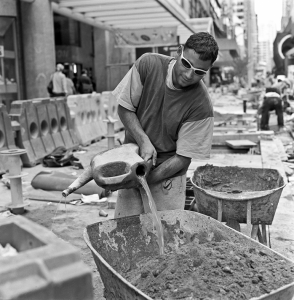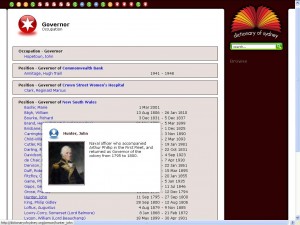The Dictionary of Sydney was archived in 2021.
The Dictionary of Sydney was archived in 2021.
Find your way through the Dictionary

New Year's Eve in Sydney

Farewells

As the year draws to a close, the Dictionary of Sydney Trust has had the sad task of farewelling two of our staff, Victoria Keighery and Emma Grahame. The Dictionary’s Executive Officer, Victoria Keighery, was crucial in overseeing the project’s shift from research project to operational organisation. The Dictionary of Sydney is one of the few ARC funded research projects that has managed to continue beyond its research phase; we have just reached the milestone of three years live. Vic set up systems, managed the board, and drew around her a happy team of staff, both paid and volunteer, who have tirelessly worked together to deliver the Dictionary’s content.

Emma Grahame joined the research project in its infancy back in May 2007. She has been the Dictionary’s editorial coordinator for over 5 years and has cast her discerning eye over all of the content you see in the Dictionary. Emma has been a powerhouse of activity. She has been the touchstone for our authors, guiding and editing their contributions. Not only has she ensured the Dictionary hit our one-millionth-word published, Emma also established our blog, which regularly highlights new content, recent discoveries, relevant events and provides a guided short-cut to accessing the Dictionary’s ever-growing content.

On behalf of the Trust, and all our stakeholders, we wish both Vic and Emma well in their new endeavours and thank them for their enthusiasm and commitment to the Dictionary over so many years. They have helped make the Dictionary what it is.
Kings Cross










We are hiring - Executive Officer
The wearing of the green

Audacious!
 'Audaciousville : the story of Dacey Garden Suburb, Australia's first public housing estate' by Samantha Sinnayah, City of Botany Bay Council
'Audaciousville : the story of Dacey Garden Suburb, Australia's first public housing estate' by Samantha Sinnayah, City of Botany Bay Council
One of our authors and a great supporter of the project, Sam Sinnayah, has just published a book based on her wonderful exhibition about Daceyville, one of Sydney's most interesting suburbs. Sam is curator at the George Hanna Museum, run by the City of Botany Bay Council, and curated an exhibition on Daceyville there in 2010. The book's called Audaciousville:the story of Dacey Garden Suburb, Australia's first public housing estate. Sam also wrote our entry on Daceyville and helped us find some of the great images we've illustrated it with. But her book is even more extraordinary -- with great images and fascinating detail about the origin of the Dacey Garden Suburb project, the different architects and designers, the architectural styles and the changes to plans forced by budget constraints and resistance by builders. Best of all are the photos and stories from residents of the suburb, both past and present, which illustrate the lived gap between planning and experience. Where the architects saw an innovative cul-de-sac design, the kids saw a good seculded place for fights. Where the garden designers saw iconic palm trees, the kids saw a source for bows and arrows.
 Pages 18 & 19 of 'Audaciousville:Audaciousville : the story of Dacey Garden Suburb, Australia's first public housing estate'
Pages 18 & 19 of 'Audaciousville:Audaciousville : the story of Dacey Garden Suburb, Australia's first public housing estate'
The book was published with the assistance of a federal grant under the Your Community Heritage program, and is a very worthy result of that excellent program. You can read it online via Trove. If you'd like to get a copy, email museum@botanybay.nsw.gov.au for further details.
Finding your way through the Dictionary, part 8




Finding your way through the Dictionary, part 7



Finding your way through the Dictionary, part 6





